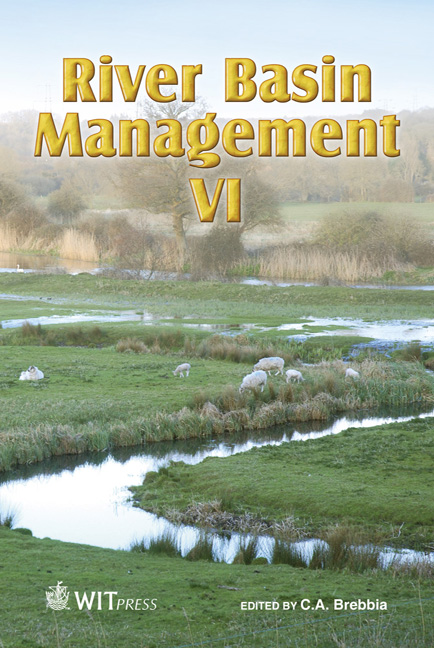Stream Barb Performance In A Semi-alluvial Meandering Channel
Price
Free (open access)
Transaction
Volume
146
Pages
12
Page Range
227 - 238
Published
2011
Size
2,725 kb
Paper DOI
10.2495/RM110201
Copyright
WIT Press
Author(s)
E. C. Jamieson, C. D. Rennie & R. D. Townsend
Abstract
A series of seven stream barbs were installed at two consecutive channel bends in Sawmill Creek, a semi-alluvial stream located in Ottawa, Canada. Stream barbs (also known as submerged groynes) are low-profile linear rock structures that extend from the outside bank regions of channel bends in an upstream direction, to redirect the attacking currents and prevent erosion of the bank. As well as providing bank protection, these structures promote vegetated stream banks, create resting pools and scour holes for fish habitat, and increase biodiversity for aquatic species. Despite these benefits, because of their relative novelty as river training structures, stream barbs are not a common means of stream bank protection in Canada and are possibly non-existent for semi-alluvial or clay channels. Three years of monitoring and measurement of flow conditions (discharge, water velocity and depth) and bathymetry, before (2 years) and after (1 year) the construction of the barbs, have been collected at the Sawmill Creek study site, providing valuable data for understanding their performance in a semi-alluvial channel. Sawmill Creek has a predominately clay bed and banks, presenting a rare opportunity to study the unique dynamics between flow and sediment transport within a clay channel. This paper reports on (i) the unique site conditions and monitoring methodology; (ii) preliminary results of the 3 year monitoring program; and (iii) recommendations for future design and implementation of these structures. Keywords: stream barb, groyne, channel bend, field measurements, clay. 1 Introduction In September 2009, a series of seven stream barbs (or barbs) were installed in Sawmill Creek, an urban, meandering stream located in Ottawa, Ontario,
Keywords
stream barb, groyne, channel bend, field measurements, clay





